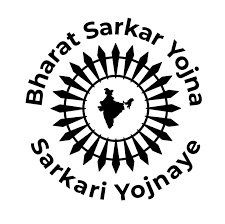Sarkari Bharat, or Digital India, is a government initiative to transform India into a digitally empowered society and knowledge economy. The initiative was launched in 2015 with the aim of providing government services online, promoting digital literacy, and increasing the use of information and communication technology (ICT) in all sectors of the economy.
Sarkari Bharat has made significant progress in recent years. The number of people with internet access has increased from 243 million in 2015 to 830 million in 2023. The government has also launched a number of digital initiatives, such as Aadhaar, the world’s largest biometric identification system, and the Unified Payments Interface (UPI), a real-time digital payment system.

Introduction
Sarkari Bharat has made significant progress in recent years. The number of people with internet access has increased from 243 million in 2015 to 830 million in 2023. The government has also launched a number of digital initiatives, such as Aadhaar, the world’s largest biometric identification system, and the Unified Payments Interface (UPI), a real-time digital payment system.
Benefits of Sarkari Bharat
- Improved financial inclusion: Digital payment systems such as UPI have made it easier for people to access financial services, even in rural areas. This has helped to reduce poverty and inequality.
- Increased transparency in government procurement: Digital platforms have made it more transparent and efficient for the government to procure goods and services. This has helped to reduce corruption and save money.
- Improved delivery of public services: Digital technologies have been used to improve the delivery of public services such as healthcare, education, and agriculture. For example, farmers can now use mobile apps to get access to real-time weather information and market prices.
- Empowered citizens: Digital technologies have given citizens a greater voice and empowered them to participate in the democratic process. For example, citizens can now use social media to express their views and to hold the government accountable.
Challenges of Sarkari Bharat
Digital divide
The digital divide is one of the biggest challenges to Sarkari Bharat. According to a 2022 report by the Internet and Mobile Association of India, only 49% of Indians have access to the internet. This means that over half of the Indian population is still unable to benefit from the government’s digital initiatives.
The digital divide is particularly pronounced in rural areas, where only 36% of people have internet access. This is compared to 65% of people in urban areas. The digital divide is also a problem among disadvantaged groups, such as women and the poor.
Cybersecurity
Another major challenge to Sarkari Bharat is cybersecurity. India is increasingly vulnerable to cyberattacks, and the government needs to invest in cybersecurity measures to protect its digital infrastructure and the data of its citizens.
In recent years, there have been a number of high-profile cyberattacks in India, including the attack on the Indian Railways in 2016 and the attack on the National Payments Corporation of India in 2018.
The government has taken some steps to improve cybersecurity, such as launching the National Cybersecurity Strategy in 2020. However, more needs to be done to protect India’s digital infrastructure and the data of its citizens.
Privacy
Privacy is another major concern for Sarkari Bharat. The government needs to ensure that the data it collects from citizens is used in a responsible and ethical manner. It is important to protect the privacy of citizens and to ensure that their data is not misused.
The government has collected a vast amount of data from citizens through its various digital initiatives, such as Aadhaar and UPI. This data includes sensitive information such as biometric data and financial data.
The government has assured citizens that their data is safe and secure. However, there have been concerns about the government’s use of data, particularly in the context of surveillance.
Government capacity
The government also needs to build its capacity to deliver digital services. This includes training government employees and developing the necessary infrastructure.
Many government departments are still not equipped to deliver digital services. This is because they lack the necessary infrastructure and expertise.
The government has taken some steps to build capacity, such as launching the Digital India Capacity Building Mission in 2023. However, more needs to be done to ensure that the government is able to deliver digital services to citizens in a reliable and efficient manner.
Public awareness
There is also a need to increase public awareness about Sarkari Bharat and its benefits. This is important to ensure that people are able to take advantage of the government’s digital initiatives.
Many people are not aware of the government’s digital initiatives or how to use them. This is because the government has not done a good job of promoting Sarkari Bharat to the public.
The government needs to launch a public awareness campaign to inform people about Sarkari Bharat and its benefits. The campaign should target all segments of the population, including people in rural areas and disadvantaged groups.
Conclusion
Sarkari Bharat is a transformative initiative that has the potential to make India a more prosperous and equitable nation. However, there are still a number of challenges that need to be addressed in order to achieve its full potential.
The government needs to address the digital divide, invest in cybersecurity, protect the privacy of citizens, build government capacity, and increase public awareness about Sarkari Bharat. With continued investment and support, Sarkari Bharat has the potential to make India a leading digital economy.
Frequently Asked Questions
Sarkari Bharat, also known as Digital India, is a government initiative to transform India into a digitally empowered society and knowledge economy. The initiative was launched in 2015 with the aim of providing government services online, promoting digital literacy, and increasing the use of information and communication technology (ICT) in all sectors of the economy.




















